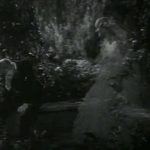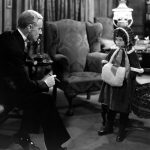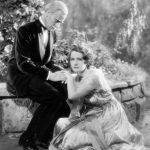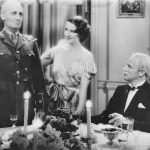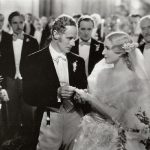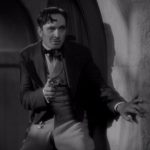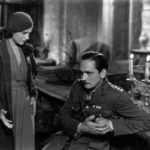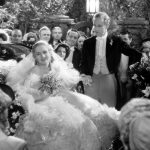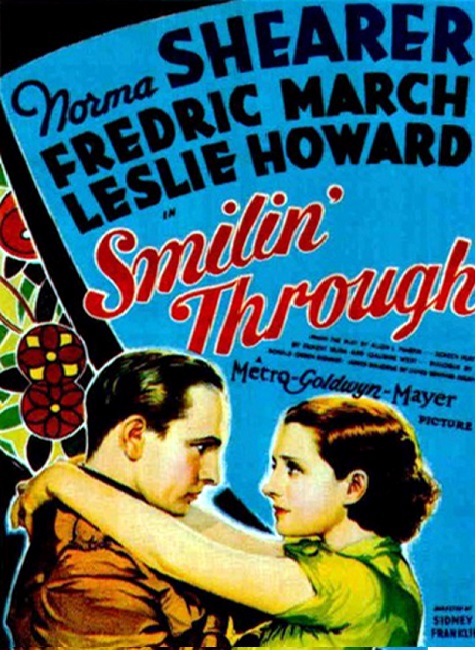
Smilin’ Through – 1932
This was an adorable movie with some good acting, an interesting plot, and a sappy, happy ending. It starred Norma Shearer, Fredric March, and Leslie Howard. Shearer and March both played two different characters, present day characters and their ancestors. Howard played the same character but at different ages.
I read somewhere, and I’ll be honest – I can’t remember where, that the movie dealt a little with spiritualism and had a slight fantasy element. Howard played the character of Sir John Carteret. He is a bitter old man who has a dark secret in his past. He has spent 30 years pining for his lost love, Moonyeen, played by Shearer, who had been murdered at their wedding. He spends long hours in the garden where he had spent so many happy times with her before her death. The ghost of Moonyeen visits John and it is implied that he can actually hear her and have conversations with her. This is where the whole spiritualism aspect comes in.
Then one day, John is manipulated into becoming guardian to Moonyeen’s niece. He becomes a happier man as she grows into a beautiful young woman, Kathleen, played by Shearer. By chance, she meets and falls hopelessly in love with Kenneth Wayne, played by March. When Sir John learns of his identity, he becomes despondent and forbids Kathleen to ever see him again, threatening to disinherit her if she does. Apparently, Kenneth is the son of the man who murdered his beloved Moonyeen.
Of course, he forces Kathleen to promise that she will turn him away, a promise which she cannot keep. But Kenneth goes off to fight in a war that is never clearly identified. He is gone for 4 years, during which time he is emotionally and physically damaged. On his return, he turns her away because… well, it never really explained why, other than the fact that he could only walk with crutches.
Meanwhile, John is filled with hate for him, punishing him, and consequently Kathleen, for the sins of his father. Moonyeen’s ghost tries to get John to let go of his hate because it is getting in the way of her communicating with him. But so hateful is he that he cannot hear her pleas. But then Kathleen learns of his injuries and tells her uncle that she loves him anyway. John finally sees the error of his ways and tells her to go after Kenneth and marry him.
It is a cute enough story, though not terribly deep. But as I said, the acting was good, especially Shearer, who seemed to be able to shed convincing tears on cue. I liked March and Howard, both of whom were very young when this movie was filmed. The film is based on a well-loved play of the same name, written by Jane Cowel and Jane Murfin. In fact it was so popular that this was actually the second film adaptation, the first being a silent film made in 1922. Incidentally, the director, Sidney Franklin, was the very same man who directed the silent film version. In addition, a third film was made in 1941, this one being done as a musical starring Jeanette MacDonald.
As I think about it, there was really only one thing I would have changed about the film: its ending. The ending we got was alright, but I would have added a single scream that would have given the end a much more poignant climax, and would have completely changed the romantic, feel-good vibe.
So, John tells Kathleen to run to the train station to get her man. As he is waiting for her to return, he dies, and after 50 years of being alone, his spirit is finally reunited with Moonyeen. The two ghosts watch as Kathleen and Kenneth enter the gate and make their way towards the house. Then the camera follows the spirits as they get into a ghostly carriage and ride off to spend eternity with each other. But they ignored the fact that Kathleen is about to find John, her beloved uncle, dead. Just think of how that one scream in the background would have changed the ending, making it more meaningful and powerful. They could even have given a last wistful glance back at the world of the living before riding off to their everlasting bliss. But I guess that might have been too depressing for the audiences of 1932.
